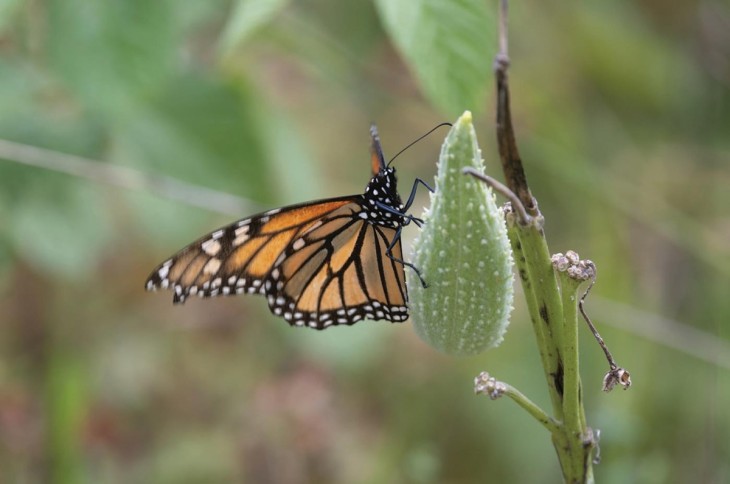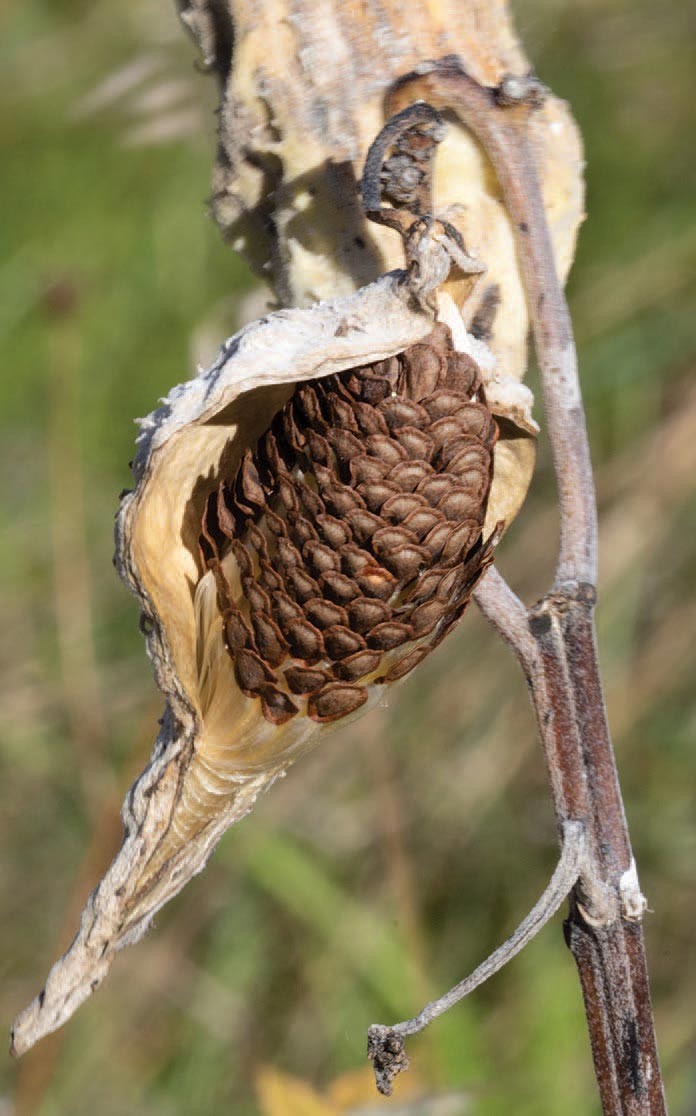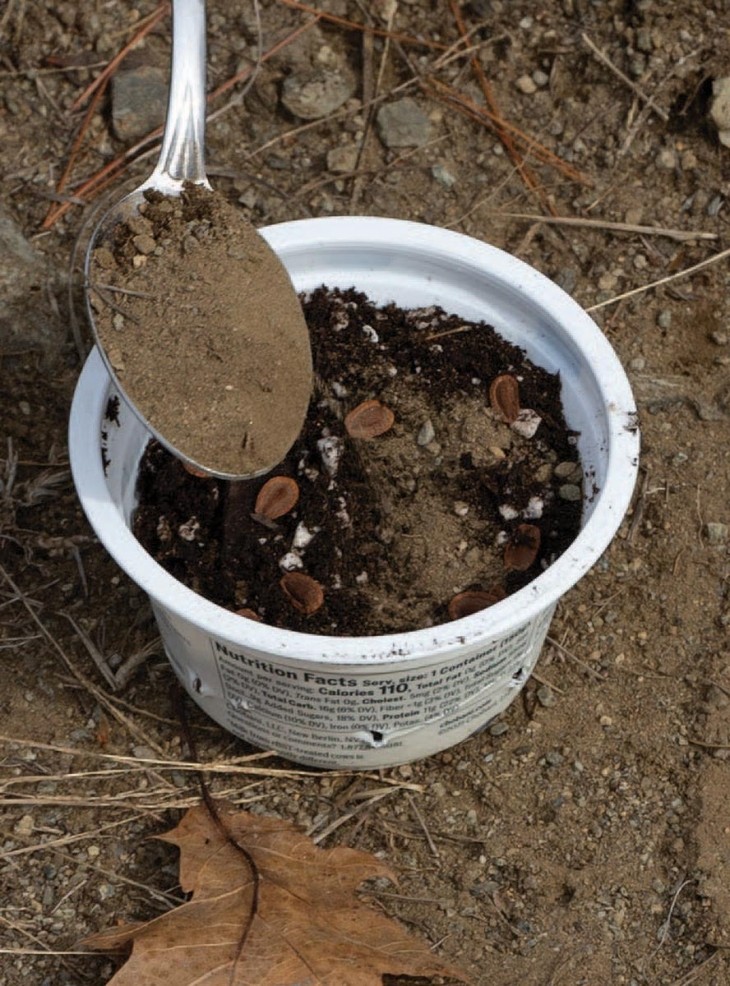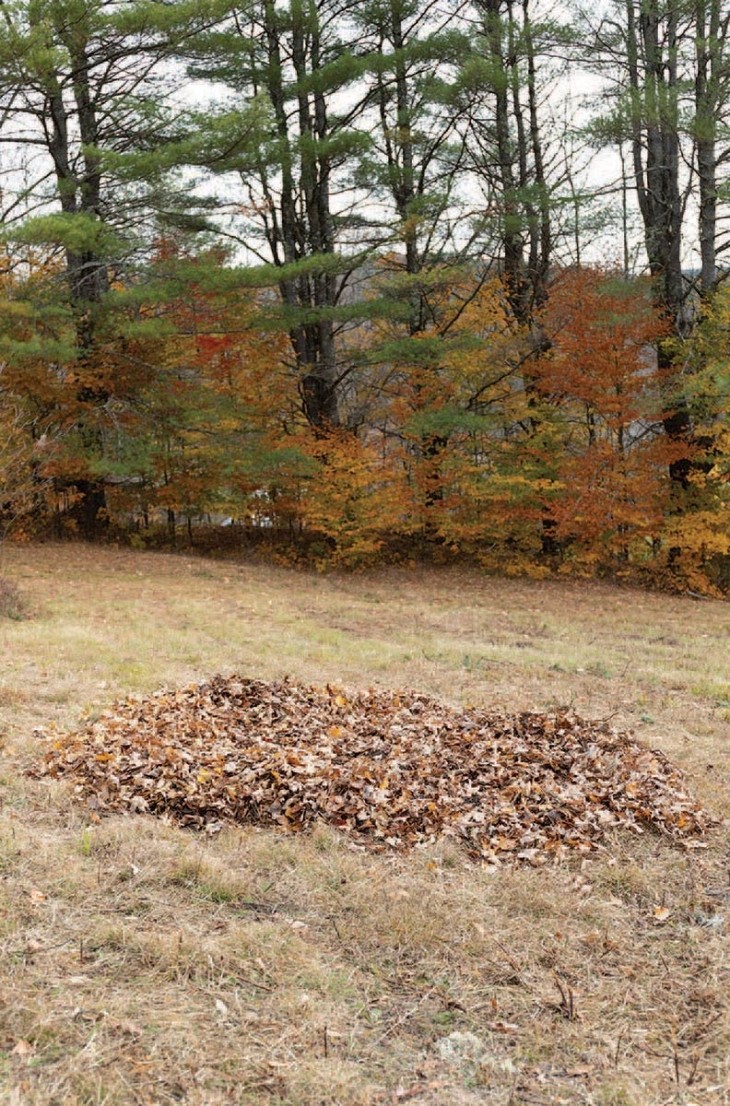
For those of us who worry about the decline of monarch butterflies, milkweed species have special status as the butterflies’ obligate larval hosts. Early autumn – as the pods of common milkweed (Asclepias syriaca) ripen, but before they split open – is a good time to take an inventory of patches around your home and to collect seeds. You may also want to consider planting some of the Northeast’s other native milkweed species, all of which feed monarch caterpillars. Autumn and spring are the best seasons for planting.
Maintaining Existing Plants
If you already have common milkweed growing on your property, assess whether other species are encroaching on its space. Common milkweed tends to do best in recently disturbed sites, and over time, patches may lose ground to taller plants, including other pollinator-friendly species such as goldenrod (Solidago spp.) and steeplebush (Spiraea tomentosa).
If native competitors are crowding out your milkweed, consider taking a page from the forestry practice of establishing uneven-aged stands as a way to enhance biodiversity. To do this, mow areas adjacent to the milkweed, while leaving other areas untouched on a two-or-more-year cycle. This diversified approach can help native bees, which use second-year dried stems of Joe Pye weed (Eutrochium spp.), flowering raspberry (Rubus odoratus), and many other meadow plants, both for adult hibernation and also as protected chambers for eggs. Wildflower diversity also allows for more consistent pollinator habitat across the growing season, including feeding opportunities for migrating monarch butterflies, long after milkweed blooms have faded.
Of course, if invasive plants are encroaching, peaceful coexistence is not the goal. Mowing and then smothering goutweed (Aegopodium podagraria), wild chervil (Anthriscus sylvestris), and other field invaders with thick black plastic for at least a year can be very effective. Depending on the invasive species, persistent pulling may be necessary to prevent the unwanted plants from growing among the milkweed. The latter strategy takes patience and perseverance.
Species and Site Selection for New Plants
A key first step to introducing new milkweed plants to a site is to identify which species is best suited to local conditions. There are a total of ten different native milkweed species in the Northeast, but for practical purposes, four are the easiest to obtain. Common milkweed is likely the best option if you have plenty of open, sunny growing space; it spreads vigorously by its rhizomes (underground stems) and is tolerant of a wide range of soils. Poke milkweed (A. exaltata) is a good choice for semi-shady spots, such as the woody edge of a yard, and swamp milkweed (A. incarnata) thrives in sunny, moist ground. For well-drained, sunny spots where you’d prefer an easy-to-contain plant instead of a sprawling patch, consider planting butterfly milkweed (A. tuberosa). Many native plant nurseries sell young plants of one or more of these four species, and there are also several organizations in the Northeast that sell regionally sourced and sustainably harvested seeds.
A note of caution, however: not all milkweeds are desirable. Tropical milkweed, a non-native species often sold at gardening stores, can carry a protozoan parasite. The plant is also problematic because in the Northeast, its late bloom time can trick monarchs into delaying migration. There are also two non-native invasive vines in the milkweed family – black swallowwort and pale swallowwort – that are poisonous to monarch caterpillars.
Field Preparation
To introduce milkweed to an established field or lawn, you should prepare the site at least three months in advance. Start by mowing the field low to the ground and then smothering, or “sheet mulching,” on top of the grass and other existing plants with overlapping layers of flat cardboard and newspapers. Later, you’ll be able to cut through this layer to plant your milkweed seedlings.
On top of the cardboard and newspaper layers, spread 4 to 6 inches of composted leaves or aged bark. (Add topsoil if you also plan to direct-sow other pollinator-friendly seeds to accompany your milkweed.) This top layer of organic material will add nutrients to the growing site over time.
Seed Collection and Germination
As with any wild seed collection, if you plan to collect milkweed seeds from wild plants, it’s important to consider whether your activity could reduce the wild plants’ reproductive odds. Among the milkweeds, only common milkweed is sufficiently abundant that this isn’t a concern.
Common milkweed pods ripen between late summer and mid-October and are ready to harvest when they begin to split open. When you look inside a pod, you should see that the seeds – attached to silky hairs – are a dark brown, versus an unripe light tan. After you scoop out the pod’s contents – seeds and silky hairs combined – put them in a paper bag or other container that allows them to dry out.
The best time to start the seeds is between mid-November and February. Yogurt containers work well as seed pots, as long as you add drainage holes. Put compost-rich potting soil in each container and place multiple seeds on top of, not in, the soil. Sprinkle about 1/8 of an inch of coarse sand on top of the seeds.
After you’ve sowed the seeds in the pots, put them outside, exposed to winter weather, which will activate the seeds and prompt germination in spring. Because mice and other winter scavengers eat milkweed seeds, it’s helpful to cover the pots with hardware cloth or other metal screening.
Germination time is variable, ranging from early to late spring. Once the seeds sprout, put the pots in a location with partial shade, and keep the young milkweeds well-watered (you may need to separate plants and put them in bigger pots). In early autumn, transplant them into the sheet-mulched soil, cutting holes in the cardboard to do so. Keep watering the plants until they are well established. Hopefully, you’ll provide a home for monarch caterpillars for years to come.
For more information, check out Heather McCargo’s article, “Monarchs and Milkweed,” on the Wild Seed Project site. The site also offers a directory to many (not all) nurseries in the Northeast that stock native plants. For profiles of all ten of the Northeast’s native milkweed species, see The Native Plant Trust’s website (search for “Asclepias”).




